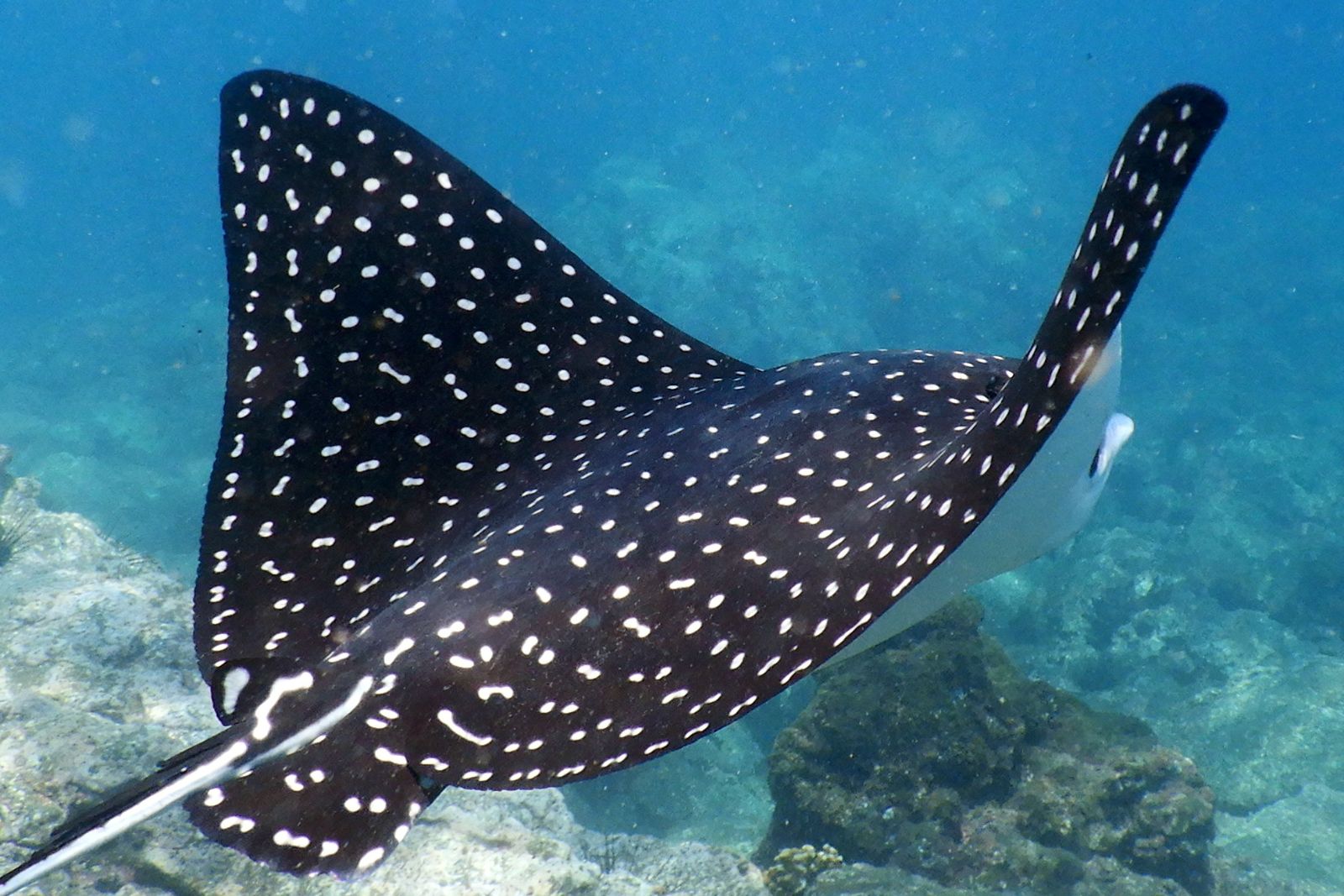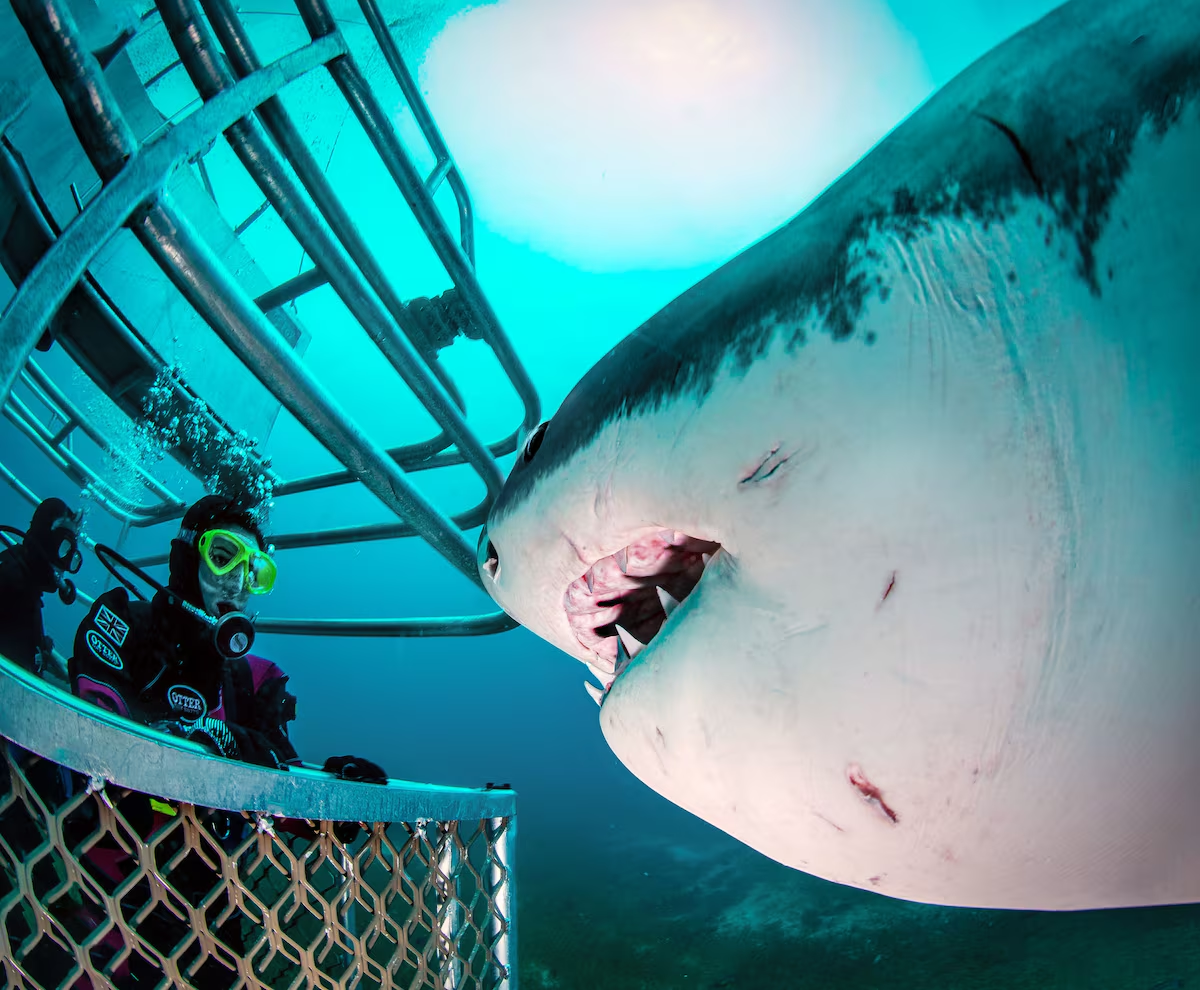Stamp: Blue Shark and Stingray - Overprinted (Barbuda 2000)
Blue Shark and Stingray - Overprinted (Barbuda 2000)
16 June (Barbuda ) within release International Year of the Ocean goes into circulation Stamp Blue Shark and Stingray - Overprinted face value 75 East Caribbean cent
| Stamp Blue Shark and Stingray - Overprinted in catalogues | |
|---|---|
| Stanley Gibbons: | Sg: BX 2276 |
Stamp is square format.
Stamp from Antigua & Barbuda overprinted "BARBUDA MAIL" in black.Also in the issue International Year of the Ocean:
- Mini Sheet - 20,000 Leagues Under the Sea - Overprinted face value 25*40;
- Stamp - Atlantic Barracuda (Sphyraena sp.) - Overprinted face value 40;
- Stamp - Black Tip Shark - Overprinted face value 40;
- Stamp - Black-cap Gramma and Blue Tang - Overprinted face value 75;
- Stamp - Blue Shark and Stingray - Overprinted face value 75;
- Stamp - Captain Nemo - Overprinted face value 40;
- Stamp - Clown Fish - Overprinted face value 40;
- Stamp - Cocoi Heron (Ardea cocoi) - Overprinted face value 75;
- Stamp - Common Tern (Sterna hirundo) - Overprinted face value 75;
- Stamp - Divers - Overprinted face value 40;
- Stamp - Emperor Angelfish - Overprinted face value 40;
- Stamp - Emperor Nautilus (Nautilus pompilius) - Overprinted face value 40;
- Stamp - Fiddler Stingray (Trygonorhina fasciata) - Overprinted face value 6;
- Stamp - Goatfish and Cat Shark - Overprinted face value 75;
- Stamp - Green Moray Eel (Gymnothorax funebris) - Overprinted face value 40;
- Stamp - Hammerhead Shark - Overprinted face value 40;
- Stamp - Hawksbill Turtle - Overprinted face value 40;
- Stamp - Humpback Whale (Megaptera novaeangliae) - Overprinted face value 6;
- Stamp - Jellyfish - Overprinted face value 40;
- Stamp - Lionfish - Overprinted face value 40;
- Stamp - Long Nosed Butterflyfish - Overprinted face value 40;
- Stamp - Majestic Snapper - Overprinted face value 75;
- Stamp - Manta Ray (Mobula sp.) - Overprinted face value 40;
- Stamp - Maroon-tailed Conure (Pyrrhura melanura souancei) - Optd face value 75;
- Stamp - Nassau Grouper - Overprinted face value 75;
- Stamp - Octopus (Octopoda sp.) - Overprinted face value 40;
- Stamp - Porkfish - Overprinted face value 40;
- Stamp - Queen Angelfish (Holacanthus ciliaris) - Overprinted face value 40;
- Stamp - Racoon Butterflyfish - Overprinted face value 40;
- Stamp - Rainbow Lorikeet (Trichoglossus haematodus) - Overprinted face value 75;
- Stamp - Regal Angelfish - Overprinted face value 40;
- Stamp - Saddleback Butterflyfish - Overprinted face value 75;
Stamp Blue Shark and Stingray - Overprinted it reflects the thematic directions:
Animals are multicellular, eukaryotic organisms of the kingdom Animalia (also called Metazoa). All animals are motile, meaning they can move spontaneously and independently, at some point in their lives. Their body plan eventually becomes fixed as they develop, although some undergo a process of metamorphosis later on in their lives. All animals are heterotrophs: they must ingest other organisms or their products for sustenance.
A fish is any member of a group of animals that consist of all gill-bearing aquatic craniate animals that lack limbs with digits. They form a sister group to the tunicates, together forming the olfactores. Included in this definition are the living hagfish, lampreys, and cartilaginous and bony fish as well as various extinct related groups. Tetrapods emerged within lobe-finned fishes, so cladistically they are fish as well. However, traditionally fish are rendered obsolete or paraphyletic by excluding the tetrapods (i.e., the amphibians, reptiles, birds and mammals which all descended from within the same ancestry). Because in this manner the term "fish" is defined negatively as a paraphyletic group, it is not considered a formal taxonomic grouping in systematic biology. The traditional term pisces (also ichthyes) is considered a typological, but not a phylogenetic classification. The earliest organisms that can be classified as fish were soft-bodied chordates that first appeared during the Cambrian period. Although they lacked a true spine, they possessed notochords which allowed them to be more agile than their invertebrate counterparts. Fish would continue to evolve through the Paleozoic era, diversifying into a wide variety of forms. Many fish of the Paleozoic developed external armor that protected them from predators. The first fish with jaws appeared in the Silurian period, after which many (such as sharks) became formidable marine predators rather than just the prey of arthropods. Most fish are ectothermic ("cold-blooded"), allowing their body temperatures to vary as ambient temperatures change, though some of the large active swimmers like white shark and tuna can hold a higher core temperature. Fish are abundant in most bodies of water. They can be found in nearly all aquatic environments, from high mountain streams (e.g., char and gudgeon) to the abyssal and even hadal depths of the deepest oceans (e.g., gulpers and anglerfish). With 33,100 described species, fish exhibit greater species diversity than any other group of vertebrates. Fish are an important resource for humans worldwide, especially as food. Commercial and subsistence fishers hunt fish in wild fisheries (see fishing) or farm them in ponds or in cages in the ocean (see aquaculture). They are also caught by recreational fishers, kept as pets, raised by fishkeepers, and exhibited in public aquaria. Fish have had a role in culture through the ages, serving as deities, religious symbols, and as the subjects of art, books and movies.
Batoidea is a superorder of cartilaginous fishes, commonly known as rays. They and their close relatives, the sharks, comprise the subclass Elasmobranchii. Rays are the largest group of cartilaginous fishes, with well over 600 species in 26 families. Rays are distinguished by their flattened bodies, enlarged pectoral fins that are fused to the head, and gill slits that are placed on their ventral surfaces.
Sharks are a group of elasmobranch fish characterized by a cartilaginous skeleton, five to seven gill slits on the sides of the head, and pectoral fins that are not fused to the head. Modern sharks are classified within the clade Selachimorpha (or Selachii) and are the sister group to the Batoidea (rays and kin). Some sources extend the term "shark" as an informal category including extinct members of Chondrichthyes (cartilaginous fish) with a shark-like morphology, such as hybodonts. Shark-like chondrichthyans such as Cladoselache and Doliodus first appeared in the Devonian Period (419–359 million years), though some fossilized chondrichthyan-like scales are as old as the Late Ordovician (458–444 million years ago). The earliest confirmed modern sharks (selachimorphs) are known from the Early Jurassic around 200 million years ago, with the oldest known member being Agaleus, though records of true sharks may extend back as far as the Permian.



